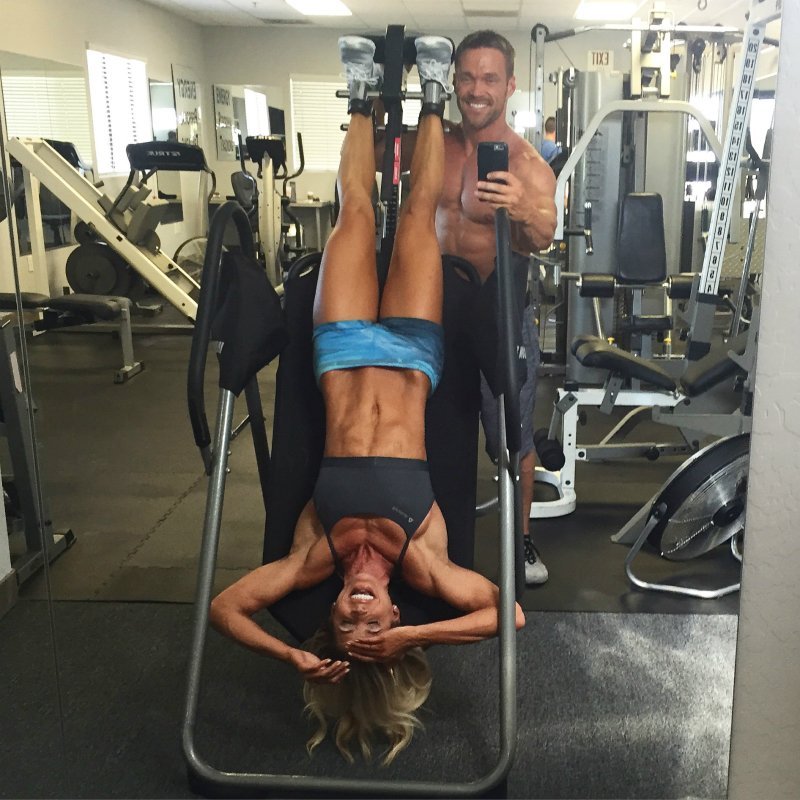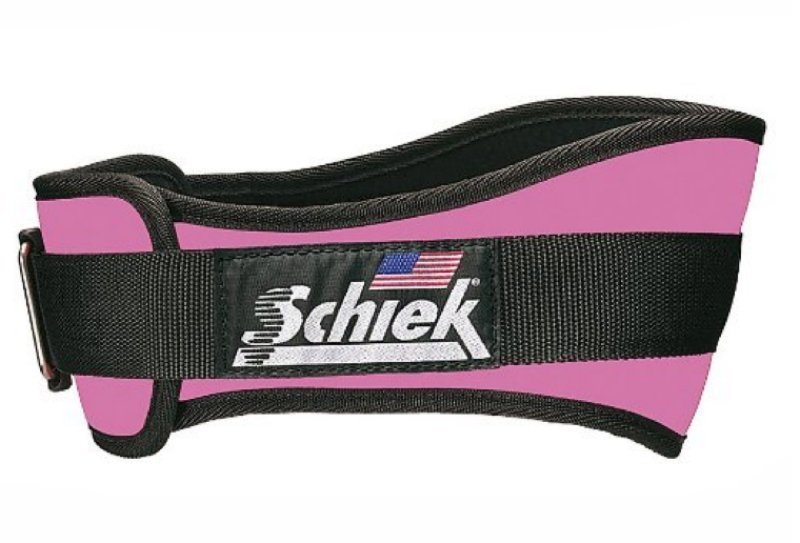Ok, here it is! Girl to girl, we need to discuss something I THINK is more common than I’ve ever believed! I’m getting a little personal and a little science-y on you today to talk about diastasis recti. Diastasis rect-who? Rect-ME! (Ok, stop).
I’m going to warn you up front. There is SO much to cover in this post—it’s a little long. If you wanna’ get straight to the meat (or the exercises you can do to fix your diastasis recti), scroll down. If you wanna’ learn more and figure out if you have this condition, keep reading.
Let me get you up to speed. Diastasis recti generally happens during pregnancy when the two large parallel bands of abdominal muscles separate due to the expanding uterus. Some women’s ab muscles go back to normal after the baby is born, and some do not…mine never have, and chances are yours haven’t either—which is why you are here.
The good news is that the diastasis caused by pregnancy can be corrected with exercises and stretches designed to optimize deep core muscular function. So ladies, don’t worry—your body wants to function right, and it will. We just need to wake up the right core muscles and teach them what to do! But let’s not get ahead of ourselves. Saving that for later.
Now how this happens and why it is worse for some women, no one is 100% sure. But we can hypothesize. It’s been said to be hereditary, but it may also be caused by working out your abs too soon after a baby is born, or even doing the wrong exercises WHILE pregnant. While I didn’t workout during ALL of my pregnancies (just the last 2), I personally feel like working my abs hard during prego worsened my condition. But that’s just my opinion.
Crazy fact, I didn’t even notice my ab separation until after Cash was born!! Yes, 3 kids later. I mean, I knew it was there, but I didn’t realize it was a medical condition. Embarrassingly enough, I always just thought I had definition down the center of my abs! Ha! Nope…wishful thinking. Just diastasis. Once I realized this odd look my midsection had wasn’t normal, nor was it normal for me to be able to literally stick my hand inside of my abs and touch my insides with just skin separating, I knew I had to do something about it. If you’d like a visual, just check out the pic below. This was posted on social media a couple of weeks back, and I got an overwhelming response from women (you!) that suffer from the same condition…
From a medical standpoint, until recently, I had a little over a 3-finger sized gap between my abs that was physically unprotected. Like I said, intestines…right below my skin. And during certain ab exercises, my insides would actually protrude through my abs, forming a weird point. Disgusting, I know. And it’s even scarier to think how vulnerable my vital organs were. If this went untreated, I could suffer from a major intestinal hernia, and given my level of activity (and types of heavy lifting), chances of this happening are higher than most. I mean, I already have an obvious umbilical hernia (my dramatic outtie belly button) so I figure I am more prone than most…
Extensive research on the topic taught me a few things…one of them being there are a handful of factors that make a woman more susceptible to diastasis recti:
- Having more than one child/pregnancy
- Having pregnancies close together
- Being?over the age of 35
- Having big babies
- Having multiple births
I know…some of you are looking at this ist realizing you’ve been double—or even quadruple—whammied! (I?m raising my hand to a couple). Don?t beat yourself up about what you cannot change because diastasis recti is very common—about 67% of all postpartum women have it. So you (and I) are in good company.
If you’re not sure if you are among the lucky few who steered clear of this pregnancy consequence, here’s an easy way to check:
- Lie on your back with your knees bent, soles of your feet close to your booty.
- Place one hand behind your neck and the other hand on your abdomen with your fingertips flat at your belly button, fingers facing downward.
- Gently push your fingertips into your abdomen while rolling your upper body off of the floor, chin towards the ceiling.
- Feel for a separation between those two ab muscles. Experts say that a 2-2.5 finger or more spread signals diastasis recti.
Now, let’s talk about our options moving forward. We can go the immediate and potentially easy (but expensive) route with surgery. BUT, surgery is not always recommended if you are still in your childbearing years…I mean think about it, one more baby, and you’ll pop those abs right back apart! As well, there is no guarantee that surgery will be 100% effective. (SIDE NOTE…Research on this topic started once Chris told me NO to this option because he wants more babies! Another topic for another day…but…).
So for me, at-home exercises and remedies are the way to go. Anytime I can avoid going under the knife, I will. And worst case? If the exercises don’t work, surgery as an option is always going to be there.
Before we go farther—a very important disclaimer: The following “fixes” are all based on my experience and my research, so please check with your doc BEFORE doing anything for your diastasis recti since each case is different. Okay, here goes:
Over this past year, my training protocol has changed as I have transitioned from CrossFit-style workouts to body building. Along with the training change-up, I changed the way I worked my abs too, focusing on decreasing (actually eliminating) the typical ab exercises and increasing the deep-core muscle exercises. I am happy to report that over this year, my abdominal muscle separation has decreased dramatically to less than 2 fingers!! But it still isn’t quite where I need it to be to consider myself healed.
The proof is in the pudding for me: A lot of this boils down to doing the RIGHT exercises. I realize that for so long I was doing what I intuitively thought would work (swing ups, sit ups, V ups, knees to bar, etc), but in reality, these move were working against me by ONLY working my Rectus Abdominus. The REAL muscles that needed working are known as the Transversus Abdominus and Lumbar Multifidus. These are the the most neglected of the ab muscles, but also happen to be arguably the most important. They lie beneath the Rectus Abdominus, supporting posture, controlling breathing during heavy lifts, and supporting the back. These are the muscles elite athletes work to add explosive power to training and are also the muscles we mamas need to work to relieve back pain, create a tighter midsection, AND improve our diastasis recti.
Some at-home exercises you can do to focus on these important muscles are below. I’ve also recorded a demonstration video for you (at the bottom of the post) so you can SEE how to perform these moves right and hear my instructions. Make sure that when you do these moves, you focus and move slowly—keeping the mind body connection. In other words, don’t just go through the moves. You’ll notice that breathing is a KEY component to all of these movements: Deep inhales, and exhale when you activate the muscles.
-
- Drawing In Exercise: Now technically every single move listed below requires you to “draw in,” so I figured I would do a little explaining. Drawing in is NOT sucking in (which uses the outer muscles). Drawing in is done by allowing those inner muscles to pull your abdomen deep inside toward your spine. Draw in from the lower region of your abs. Drawing in is something you can do in sets for as long as you can hold (work up to 60 seconds at a time), or it’s something you can simply do as you walk around your house. Believe it or not, your posture will improve big time with this! This can be done standing, sitting, lying down…you name it. Just DRAW IN!
- Vacuuming: No…not vacuuming your carpet (although I guess technically you can vacuum ON your carpet). I’m talking about the core exercise known by this name. I know I’ve talked about this before, but I’m going to talk about it again. Easily explained, simply stand up straight, inhale deeply, followed by an exhale. Once all of the air is deflated from your lungs, draw your belly button in and up toward your spine. HOLD (as tough as it is) for as long as you can. I aim for 30 seconds, but if holding your breath that long isn’t doable, simply keep the clock running and keep your belly button in and tight as you slowly breathe for the remainder of the 30 seconds. Try for 5-10 reps a day.
- Broomstick Rotations: With a dowel or a broomstick behind your neck, perform a vacuum, then when all air is exhaled and you are holding your breath with your abs squeezed, slowly rotate from side to side until you cannot hold your breath any longer. Breathe. Repeat 5-10 times.
- Abduction with Core Activation: Lie on your back with a resistance band around your knees. Exhale, engage your core and pelvic floor and pull your knees apart. Relax, inhale, and repeat for 10 reps. Be sure to keep your spine neutral and don’t press your lower back into the ground.
- Heel Slide: Lie on your back with both knees bent, feet flat. Exhale as you engage your core and pelvic floor, and slide one heel slowly along the ground until your leg is straight. Inhale and relax, then engage your core, exhale, and draw that heel back. Do 5 reps on each leg.
Once again, scroll to the bottom for my step-by-step video.
Now when it comes to traditional training and weight lifting, consider wearing a weight belt. It has worked WONDERS for me. Not only will a weight belt support your core while lifting heavy loads, but more importantly, it will act as a cue/reminder to activate and draw in with your core while lifting. Otherwise, we are naturally prone to distending our bellies during heavy lifting, only worsening our diastasis recti. This is the one I use…
So ladies, however you choose to take care of your diastasis recti, whether DIY exercises or surgery, know you are making the choice that is right for you! It’s a medical condition and not just a vain aesthetic concern, so if surgery is what you choose, then surgery it is! But if exercises are your method of healing, please keep me up to speed on your progress.
And in the meantime, have those babies, LOVE those babies, and appreciate every consequence of having such perfect little miracles! #BattleWounds
And finally…the demonstration vid…;)
Xoxo,
Heidi
Related reading:
Ask Heidi Anything: Carb Cycling While Prego?
My 1st Post Ruby Workout
My Pregnancy Workout: The Nasty 9s
My 5 Gym (and Home Gym) Must-Haves






262 Responses
Thank you so much for this! before baby my stomach was always toned and flat. It’s amazing how flat my stomach gets just engaging those muscles now, once released, (its back to the baby bloat) as I call it 🙂 I am going to do these exercises every day and I hope to get the results I have been looking for. It’s also good to know that other ab exercises can make this condition worse, I didn’t know that. You always strive to help people and make them better. I love that about you, you truly have such a big heart and I hope you know that so many of us appreciate what you do!
What ab exercises should you do since we shouldn’t do the regulars….sit-ups, V-ups, etc in addition to the ones listed above?
Hi Hope: These are the only ab exercises Heidi does anymore, and remember, you engage/work your core during other exercises too.
Mutusystem.com is a site I’d recommend anyone checking out regarding this topic of postpartum fitness and repairing a diastasis recti. It’s something I followed for over a year ( bought the fitness dvd) and it has made a difference to me. The founder is well educated and researched in this area too. There is a whole community that can be joined on facebook if you sign up.
Thank you so much for this.
Hi Heidi!
Thank you so much for this post! The one thing I was really hoping you would cover would be what exercises to avoid during pregnancy. I was lifting before pregnancy, and I have continued on (32 wks, second child) during this pregnancy. I fear that some of my lifting may be worsening my diastasis recti. My midwife said I would need to see a physical therapist to correct my condition once this baby is born. I don’t want to give up lifting, but I also don’t want to make it worse. I would say I do the typical weight lifting/circuits – a variety of squats, lunges, leg extensions, deadlifts, bench pressing, rows, lat pulldowns, shoulder presses, back extensions, etc.
I have avoided ab exercises since being told to not do any, but I know my abs are engaged in some of the lifting I do.
Any thoughts or suggestions?
Thanks!
Hi Nancy: It’s always best to discuss any pregnancy exercise programs with your healthcare team and then follow their recommendations since what is okay for one woman might not be okay for another. And congratulations on your pregnancy!
jThanks so much for this! I had my 6th blessing 10 months ago and the list of reasons you mentioned of why we get diastasis recti I fell into all 5 categories Lol! But I will definitely be implementing all these into my work out regimen! God Bless!
Congratulations on blessing #6! That’s awesome!
Thank you for this. A great way to help women.
I had a c section 15 weeks and re starting fitness. Can i do these excercises without doig any damage?
Thanks lisa xxx
Hi Lisa: You’ll definitely want to check with your healthcare team first and then follow their recommendations. And congratulations on your new little one!
Hi Heidi! Thank you for posting. I’m wondering at what point can you say your DR is “healed”? Is it possible or is it the goal that your abs reconnect with zero separation? Thanks!
Its great that Heidi is giving #Diastasisrecti the attention it requires as there is so much incorrect information on the web that many women are very frustrated. As someone who has specialized in this field for several years, all attention is a GOOD THING 🙂
Its also perfect that Heidi has also acknowledged that some of her previous exercise have perhaps made things worse. Many women continue doing exercises such as crunches as they believe it will address the ‘Mummy Tummy’.
Unfortunately there are many comments now in the fb post with incorrect information for mums, which can be quite scary as these women are NOT professionals yet convey their message as if they are.
Something that is missing in the post is the importance of testing the depth of the connective tissue and overall strength and function of the core muscles so its not just about the width.
A Diastasis does also not have to close for optimal function, so Mums don’t worry if yours does not close completely.
Thank you for bringing attention to diastasis and getting the message of proper training and healing out there. If you ever do a follow up, I think it would be great to mention that seeking a consultation from a women’s health physical therapist can be be so helpful in managing this condition. Furthermore, there are fitness professionals, such as myself, who have actually invested a lot of time and money on continuing education specifically to work with pregnant moms to manage and prevent DR, and postpartum moms to help heal and return back to a level of fitness prior to pregnancy. My programs emphasize heavy weight lifting throughout pregnancy, and then a recovery program afterwards. And there is a great group of women similar to me who do the same. So many fitpros don’t know what to do with women suffering from DR. So again, thank you for getting this into the mainstream and educating women on how to heal! Hopefully more women will follow your advice on proper and progressive return to exercise to allow for healing and returning to true awesomeness!!
Sorry if someone has already asked this. I am having a hard time distinguishing between ?drawing in? and ?sucking in?. I don?t feel like I can pull in very far either way. Does that mean my muscles are just very weak or am I doing something wrong? I feel like I have always had a doming when I did sit-ups, push-ups, planks etc. and my lower abs have always seemed weak. Any advice or specific workouts recommended outside of the Diastasis Recti exercises in this post?
Hi Paige! It can be confusing! Here’s a post with a video that might help:
https://heidipowell.net/19042
Also, visualize a string pulling your belly button back towards your spine, and that can help. If you’re looking for more core work, Heidi has a program devoted to this, and it might be helpful too:
https://heidipowell.net/abs-after-baby-program/
Hope these help! 🙂